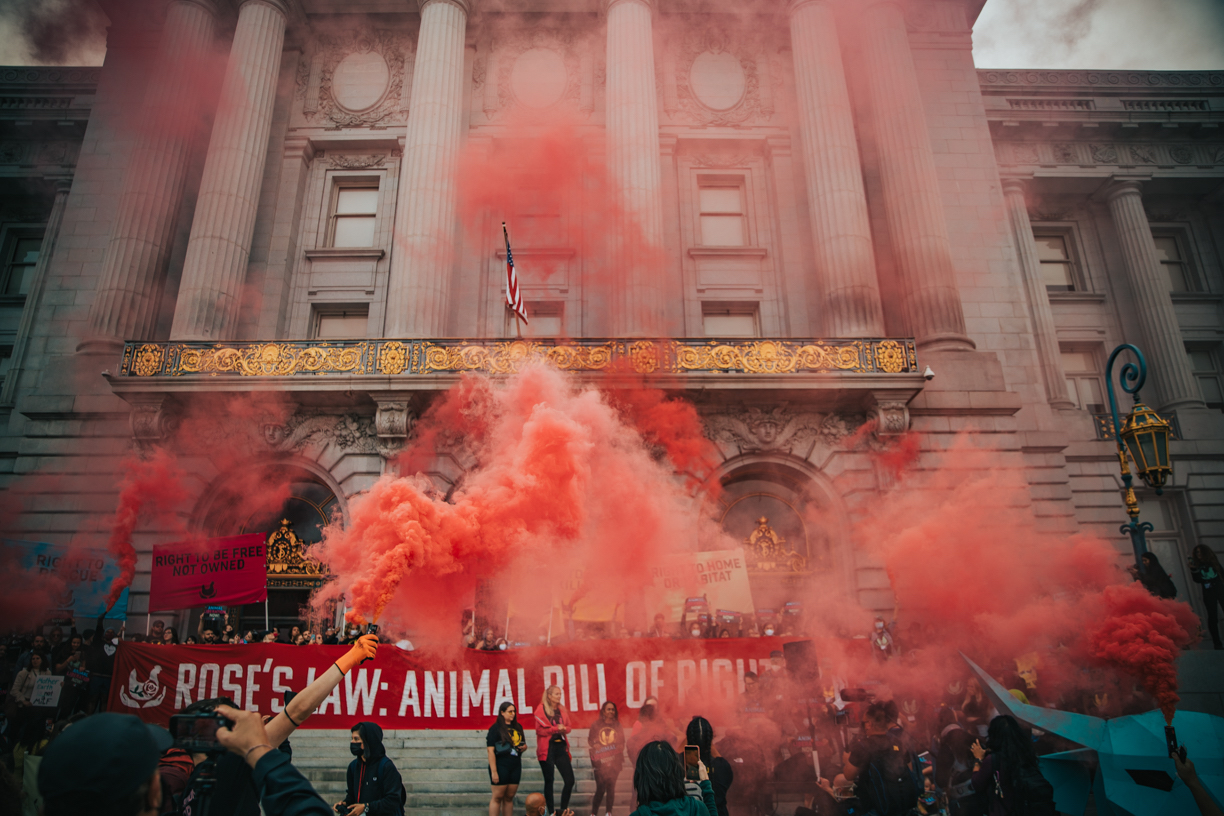Sarah's Thanksgiving

Sarah’s Thanksgiving
For baby turkeys, Thanksgiving is no holiday. It's a living nightmare.
By Wayne Hsiung
Terror was surely the first feeling Sarah ever had.
Once upon a time, most turkey chicks huddled with their mothers immediately after breaking through their shells. But today, most turkeys raised for food never see their mothers. Instead, Sarah’s life began with violence, as men roughly hanged her by her face, feet dangling, onto a machine that would sear off her beak. Some of the chicks shrieked and squealed desperately as they stared face-first into a frightening, dark machine. Others became catatonic, paralyzed by fear. But all would soon feel the searing pain as radiation burned their beaks (highly-sensitive organs that birds use to explore the world) to a crisp.
In a pain-induced stupor, Sarah was roughly thrown onto an assembly line to be sorted by sex. In one bin went the females; in the other, the males. Keeping girls and boys together is dangerous, as the boys grow larger faster and, in the crowded conditions, would assault and even kill the girls. Sarah was thrown into a shipping container along with her sisters. Here, she stood on rough plastic grates, shoved against thousands of never-to-be-named others, with no water or food on the long drive to the only home most turkeys will ever know: the “grow-out farm.”
LIFE ON THE FARM
The first week at the facility would be the deadliest. As Sarah was roughly dumped onto the barren, lifeless floor, she no doubt witnessed dozens, and perhaps hundreds, of her fellow chicks already dead. We found as many as 7% dead in some facilities; their tiny corpses littered the barn floor. Some died of diseases like aspergillosis, a fungal infection that causes pneumonia. Common in the filthy barns turkeys are grown in, aspergillosis fills the birds’ lungs with spores until they collapse and suffocate.
Other chicks die of trauma from botched debeaking or rough handling. The burned beaks are supposed to fall off, leaving a flattened and scarred tip. But where the burning is botched, the chicks can be left with grievous injuries, injuries that rot and ultimately lead to death. Debeaking is still economically justified, however, as a dead chick today is better than dozens of dead birds tomorrow – the inevitable result if thousands of birds with intact beaks are forced to live in a crowded farm environment.
But perhaps the most common method of death is what the industry calls “starve out” - babies such as Sarah weaken from starvation and are trampled to death. In the desperate and crowded struggle for life on the farm, they are simply unable to obtain enough food and water to survive. This is most likely what was happening to Sarah. She was smaller than the other birds, unable to win the fight to the food bowl, and the accumulated toll of too many lost battles wore her down over the weeks. By the time we found her, at approximately 6 weeks old, she was less than half the size of the other chicks. The other birds were already beginning to trample her, and she was struggling to muster the strength to stand.
THE ENDLESS NIGHT
The suffering Sarah must have endured over those 6 weeks is hard to imagine. Again, turkey chicks, like most baby birds, are desperate for comfort and protection. They make a distinct, high-pitched chirp when they lose sight of their mothers. In the wild, their mothers will quickly respond, and they will huddle together until the child is calm. But in the farm, there are no mothers to care for the children or protect them from the harshness of the outside world. So, the chilling cries of thousands of orphaned chicks go completely unheard.
But Sarah, like the others, never lost her instinct to find her mom. One of the most heartbreaking sights I have ever witnessed occurred when I first walked into the nursery. Thousands of chicks rushed up to me, calling for their mothers. Turkey chicks have not yet learned to fear human beings, and they mistook me for their moms.
Chicks that fall behind, like Sarah, suffer the most from the denial of maternal care. Weak and frightened, they are unable to fight through the streaming mass of bodies slamming against them. A mild bug, fatigue, or dehydration will quickly snowball into something far worse. On the first day, Sarah may have eaten half the food and water she needed. On the second, perhaps it dropped to 25%. By 6 weeks, when we found her, she was probably not eating or drinking at all. She would have died within days.

That is, if the men at the farm did not get to her first. Despite their natural friendliness, the chicks begin to realize humans are to be feared because, every day, a man would walk through the farm and brutalize the weak birds. Those weakened chicks, after all, become an economic liability. They are too small or sick to make it to slaughter, so their necks are snapped, one by one. This process, which is completely unregulated, is sheer terror to the birds, as they are highly social animals who form close bonds with members of their flocks. Who knows how many friends Sarah had to watch being killed? And who knows how many times Sarah cowered in fear, as a violent man descended upon her? How many times did Sarah wonder if her neck would be the next to snap?
It is not surprising, in the face of this endless fear and stress, that virtually all of the birds develop a fear of human beings. By week 15 or 16, as they approach slaughter, the friendly and curious chicks have transformed into broken, filth-covered, and fearful juveniles. The mere sight of a human being can cause thousands to flee in a horrifying mass of wings, feathers, and flesh. So, perhaps weakened birds like Sarah, who usually die younger, have it better. After all, they have nothing to look forward to, and there will otherwise be no end to their nightmare and pain.
Except sometimes, there is. On this holiday season, Sarah was saved.
Find out more about Sarah’s incredible recovery by following us on facebook.
Other articles

Tulare County Dairy Farms Are Poisoning Latino Communities

The Case for Systemic Change




